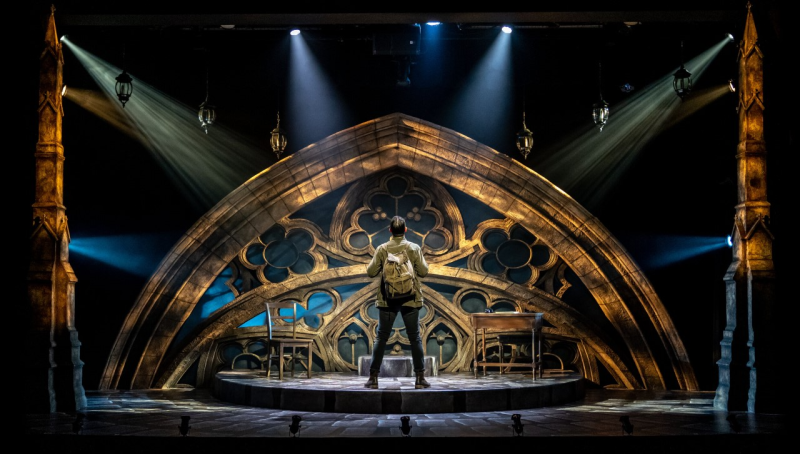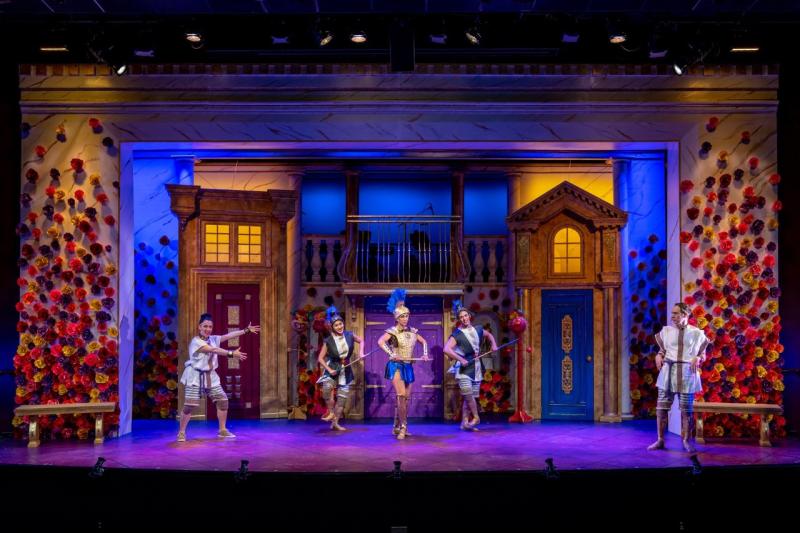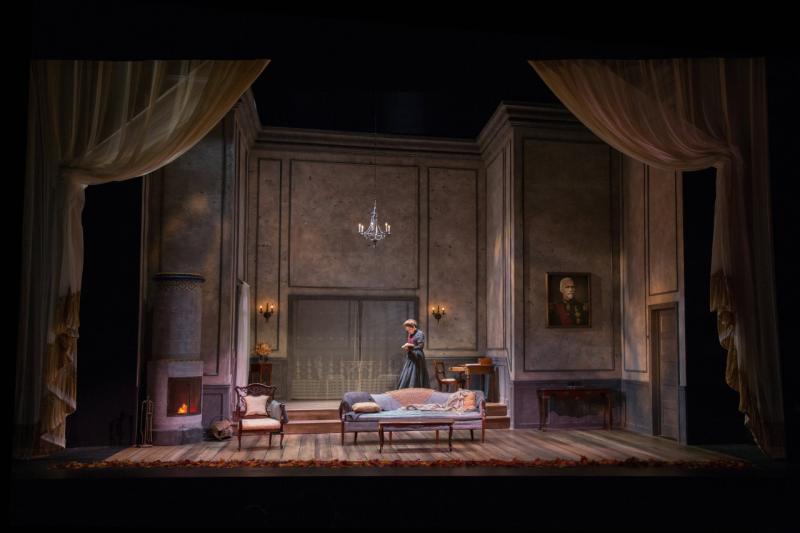Freelance scenic designer Kristen Martino is the 2022 recipient of the USITT Rising Star Award, sponsored and presented annually by LDI/Live Design to a young professional working in the disciplines of scenic, lighting, sound, or projection design. Martino will be honored during the 2022 USITT Conference & Stage Expo, in Baltimore, MD, March 2-5, 2022
Live Design chats with Martino about her background and her work in advance of her award:
Live Design: What was your path to becoming a 'rising star' scenic designer?
Kristen Martino: Performing was a big part of my entire childhood. I started with dance as a child and transitioned to theatre in high school by performing in some school musicals. When I decided to pursue theatre in college, I had set out to be a performer. However, with most acting degrees, I was required to take some technical classes such as scenic painting and hand drafting. I ended up falling in love with scenic painting and I began working in the scenic shop more and more.
Throughout my undergraduate career I had held several positions at summer theatre festivals and eventually transferred schools to continue to develop my scenic education. After all of this experience as a scenic artist, I decided I really wanted to have my own design ideas on stage instead of painting someone else’s. This lead me to make the decision to attend graduate school as a scenic designer. During this time, I was able to hone my skills and learn the art of collaboration.
After graduating with an MFA from Indiana University, I moved to Chicago and immediately began an internship in the studio of Kevin Depinet and Todd Rosenthal. This internship developed into an associate role that allowed me to gain an incredible skill set as a designer. I worked on international and domestic theatre productions and museum exhibits including the West End production of The Prince of Egypt.

Throughout my time as an associate, I was also building my own portfolio as a freelance scenic designer. Networking at the beginning of my career took patience and persistence, however it became more natural and allowed for some wonderful relationships to form. I have had some incredible opportunities to design around the country and even abroad as a part of the team to design the 2019 USA Emerging Artist Exhibit of the Prague Quadrennial.
The pandemic struck swiftly throughout our industry, and everything came to a grinding halt, however I kept in contact with several of my connections which allowed for a few shows to still be produced digitally. Theatre is still finding its way back onto its feet, but I have been fortunate enough to not only continue some works that were postponed, but also develop some new designs as well.
KM: My first professional design job was with Gulfshore Playhouse in Naples, FL. They had a booth set up in the job fair of SETC. I noticed that their table was not as crowded as the summer only companies because they were looking for year-long work. So, I found a moment when they were not interviewing anyone else and I introduced myself. The production manager at the time informed me that that they typically only hire established designers mostly from NYC and that they were not specifically looking for any designers at that moment. However, he was kind enough to still take a look at my portfolio and my work must have impressed him because a few months later they contacted me about a potential design in their next season. This design was the first of many with Gulfshore Playhouse as I have continued to be a part of their design team on several productions.

LD: What was the most challenging production you have designed and why?
The most challenging production I have designed was one where the director began our initial conversation by stating that they wanted to use the design from another production and replicate it for our own use. Of course, I had many moral objections to this and it took me a while to learn how to navigate the situation. Through many continued conversations, I was finally able to identify that the director wanted the set to function in a similar fashion as the referenced design, but they did not have a strong connection with the aesthetics. The idea of a large open space with some entrances and exits upstage and a balcony that spanned the entire length of the stage was all that was necessary to meet the design requirements of the director. I was able to sketch out some ideas that incorporated the functionality but changed the aesthetics completely to make the show our own. In the end, the entire design team was able to bring together the elements to form a really striking production. This show taught me the importance of asking the right questions. Figuring out the “why” behind the director’s request changed the entire tone of our dialog and resulted in a strong collaboration between the team.
LD: Do you enjoy teaching and what courses do you teach?
KM: Over the past several years, I have had the pleasure of holding several teaching positions at various universities. I was able to join Indiana University for a semester sabbatical replacement as the Visiting Assistant Professor of Scenic Design and I am currently in the same role at University of Florida for the 2021/2022 academic year. I also had the opportunity to teach in a more part time capacity as the Scenic and Lighting Designer at Lake Forest College for several years while living in Chicago. I have taught a wide variety of scenic courses from “Introduction to Design” to performance majors all the way through “Advanced Scenic Design” to MFA candidates. Some of my favorites to teach include “Advanced Drafting,” “Scenic Painting,” “Professional Development for Designers,” and “Scenic Design." Specifically, within the scenic design courses, I love teaching digital rendering and more advanced model making techniques that may not be covered in a standard model making course. The greatest joy of teaching definitely comes from the mentoring of students. I love being able help push the students to the next level within their designs and find the confidence to make bold choices. Being able to help students feel fully prepared after graduation is an integral goal of mine within my teaching and mentoring. Being a designer is not only about designing but also how to get a job and the soft skills needed to keep that job or get asked back by a company. Teaching may not be my primary career path at the moment, but I am always excited when I get the opportunity to work with students and support them in their own goals.

LD: What advice do you have for students graduating now, into a post-pandemic world?
KM: The advice I would give to students in a post-pandemic world would be very similar to what I would have given before- don’t just be a good designer, be a good person. Collaboration is a key component in our industry and being someone who others will want to collaborate with is essential. This means taking time to get to know the people you are working with and being flexible and open to change. Designs we create on our own might be good, but ideas created by brainstorming with others are often so much better.